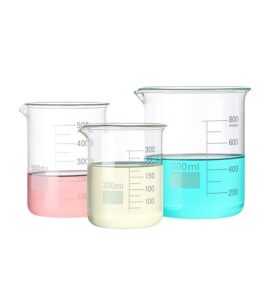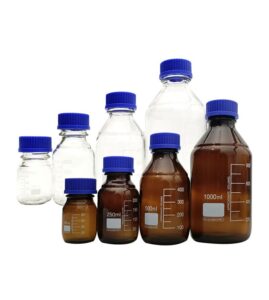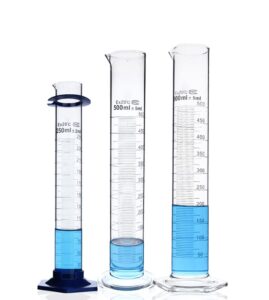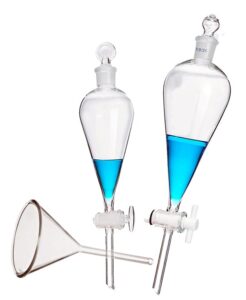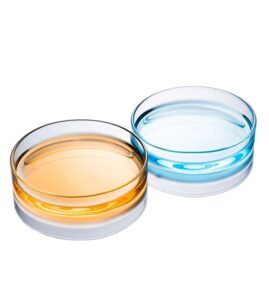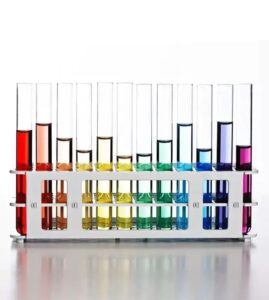Have you ever pondered the potential hazards lurking in a seemingly benign laboratory environment? Picture this: a bustling lab filled with eager scientists, but amidst this hive of activity, an overlooked detail leads to a shattering glass, spilling hazardous chemicals. Such scenarios underscore the importance of glassware safety in labs. But what exactly goes into ensuring this safety?
Glassware safety in laboratories is not just a matter of protocol; it’s a vital aspect of ensuring the well-being of those who work in these environments. Appropriate handling, storage, and usage of glassware are essential to prevent accidents and maintain a safe workspace. A well-informed approach to glassware safety can significantly reduce the risk of injuries and mishaps in labs.
Understanding the essence of glassware safety keeps the curiosity alive and sets the stage for a deeper exploration of this topic.

Why is Glassware Safety Paramount in Laboratories
In a lab, each piece of glassware, whether it be a beaker, flask, or test tube, plays a pivotal role in experiments and research. The integrity and cleanliness of these items are crucial for accurate results. However, glassware, being fragile, poses risks such as breakage, leading to injuries or chemical spills. It’s not just about handling the glassware; it’s about understanding its properties, the right way to clean, store, and dispose of it.
How Can We Ensure Proper Handling of Glassware in Labs
Handling glassware with care is the first step toward safety. This involves:
- Inspection: Before use, inspect each glass item for cracks or chips.
- Transportation: Use trays or carriers for moving glassware around the lab.
- Heating and Cooling: Gradual temperature changes are essential to prevent thermal shock.
Each of these steps might seem minor, but collectively, they form a strong defense against potential accidents.
What Are the Best Practices for Storing and Cleaning Lab Glassware
Storage and cleanliness are key. Here’s how:
- Storage: Glassware should be stored in sturdy cabinets or shelves, segregated based on size and type.
- Cleaning: Proper cleaning techniques, including the use of appropriate detergents and brushes, are vital.
Remember, improperly cleaned glassware can lead to contamination, skewed results, or even accidents.
Are There Any Special Considerations for Disposing of Broken Glassware
Disposing of broken glassware requires caution. Here’s what to keep in mind:
- Designated Containers: Always use labeled bins specifically for broken glass.
- Never Use Hands: Use a dustpan and brush to clean up broken pieces.
Disposing of glassware correctly is as important as handling it safely.
How Does Proper Labeling and Documentation Contribute to Glassware Safety
Labeling and documentation might seem like mundane tasks, but in a laboratory setting, they are vital for safety. Here’s why:
- Labeling: Every glassware containing chemicals should be clearly labeled with its contents and hazard information. This reduces the risk of cross-contamination and chemical mishandling.
- Documentation: Keeping a log of glassware usage, especially for sensitive or dangerous chemicals, ensures accountability and traceability.
These practices not only enhance safety but also contribute to the overall efficiency and accuracy of scientific work.

What Role Does Personal Protective Equipment (PPE) Play in Glassware Safety
The role of Personal Protective Equipment (PPE) in a lab cannot be overstated. It includes:
- Safety Goggles: To protect the eyes from splashes or broken glass.
- Lab Coats: To safeguard against spills on clothing.
- Gloves: To protect hands from chemicals and broken glass.
PPE acts as the first line of defense against potential accidents involving glassware.
How Can Regular Training and Audits Enhance Glassware Safety
Regular training and audits are crucial for maintaining a high standard of glassware safety:
- Training: Regular training sessions keep lab personnel up-to-date with the best practices in handling, storing, and disposing of glassware.
- Audits: Routine safety audits help in identifying potential hazards and ensuring compliance with safety protocols.
These practices ensure that safety is not just a one-time lesson but an ongoing commitment.
Addressing the Risk of Chemical Interactions with Glassware
Understanding the chemical compatibility of glassware is crucial. Certain chemicals can react with glass, causing it to weaken or break. Therefore, it’s essential to:
- Know the Material: Be aware of the type of glass and its resistance to different chemicals.
- Avoid Extreme Reactions: Be cautious with experiments that might lead to extreme temperature changes or violent reactions.
This knowledge is critical in preventing accidents that could arise from chemical and glassware interactions.
Continuing from the previous discussion on the importance of glassware safety in laboratories, it’s also crucial to address the broader scope of safety in school laboratories and during experimental procedures. School laboratories, where students are often beginners, require extra vigilance and specific safety protocols to ensure a secure learning environment. Here are some additional aspects to consider:
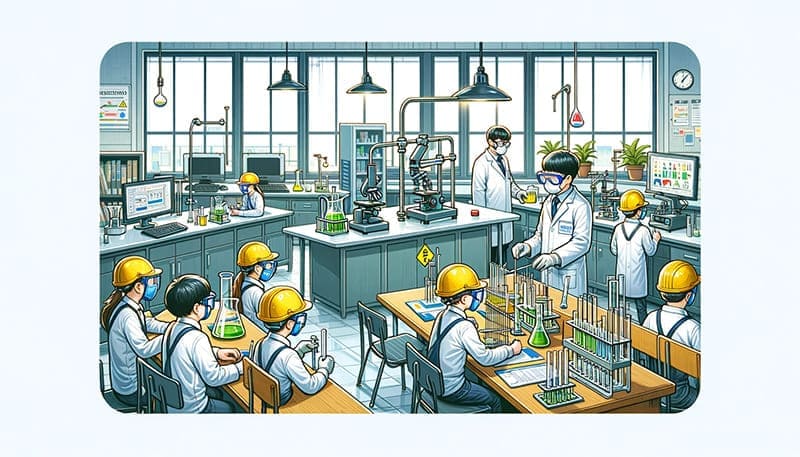
Safety in School Laboratories
Educational Emphasis on Safety
- Safety Education: Incorporating safety education as a part of the curriculum is essential. Students should be taught about potential hazards and safety procedures even before they start working in the lab.
- Supervision: Constant supervision by a qualified educator or lab technician is necessary to promptly address unsafe practices or accidents.
Safety Equipment and Facilities
- Emergency Equipment: Ensure the availability and accessibility of safety showers, eye wash stations, fire extinguishers, and first aid kits.
- Ventilation: Proper ventilation systems are crucial, especially in experiments involving volatile chemicals.
Conducting Experiments Safely
Pre-Experiment Safety Checks
- Risk Assessment: Conduct a risk assessment for each experiment to identify potential hazards and necessary precautions.
- Clear Instructions: Provide clear, step-by-step instructions and ensure they are understood before the experiment begins.
During the Experiment
- Close Monitoring: Keep a close watch on the experimental process, ensuring students follow protocols.
- Handling Chemicals: Teach and enforce correct methods for measuring, transferring, and mixing chemicals to prevent spills and reactions.
Post-Experiment Protocol
- Cleanup: Establish and enforce a thorough cleanup procedure after each experiment.
- Waste Disposal: Educate students on proper disposal methods for chemical waste, broken glassware, and other materials.
Emergency Response
Training and Drills
- Emergency Drills: Regularly conduct drills for fire, chemical spills, and other emergencies.
- First Aid Training: Provide basic first aid training to staff and students, focusing on common lab injuries.
Incident Reporting
- Accident Log: Maintain an accident log to record any incidents, however minor, for future reference and improvement of safety measures.
Continuous Improvement
Feedback and Updates
- Regular Reviews: Periodically review safety protocols and update them based on new safety standards, technology, and feedback from staff and students.
- Encourage Feedback: Create an environment where students and staff feel comfortable reporting safety concerns or suggesting improvements.
By addressing these additional aspects of safety in school laboratories and during experimental procedures, we can create a more comprehensive and effective safety culture. This not only protects the individuals involved but also enhances the overall educational experience in laboratory settings. Safety in the lab is a continuous learning process, evolving with each new scientific discovery and educational experience.
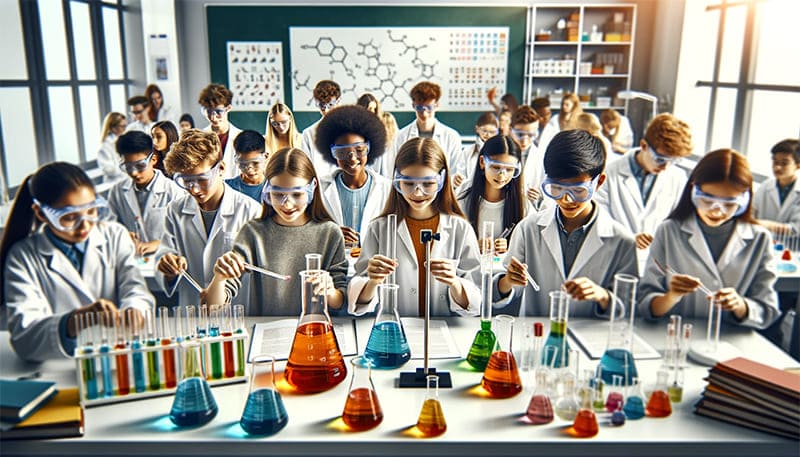
Frequently Asked Questions About Glassware Safety in Laboratories
Q1: Can all types of glassware be used for heating substances in the lab?
A1: Not all glassware is suitable for heating. Use borosilicate glass, like Pyrex or Kimax, which is designed to withstand thermal stress.
Q2: How should I clean laboratory glassware to ensure it’s free from contamination?
A2: Clean glassware using non-abrasive detergents and rinse thoroughly with distilled water. For sensitive experiments, consider using specialized cleaning solutions.
Q3: What should I do if I find a crack in a piece of glassware?
A3: Do not use cracked glassware as it poses a significant safety risk. Dispose of it in the designated broken glass container.
Q4: Are there any specific types of gloves recommended for handling glassware with hazardous chemicals?
A4: Use gloves that are chemically resistant, such as nitrile or neoprene gloves, to protect against chemical exposure and cuts from broken glass.
Q5: How can I safely dispose of chemical waste from glassware?
A5: Follow your institution’s guidelines for chemical waste disposal. Generally, segregate waste according to chemical type and use appropriate waste containers.
Q6: Is it necessary to label glassware that’s temporarily holding chemicals during an experiment?
A6: Yes, temporary labeling is important for safety and to avoid mix-ups, especially in a shared laboratory environment.
Q7: Can regular kitchen glassware be used as a substitute in laboratories?
A7: Kitchen glassware is not recommended for lab use as it may not be designed to handle chemical exposure or temperature changes common in lab settings.
Q8: What is the best way to store large laboratory glassware?
A8: Store large glassware items in sturdy, well-supported shelves or cabinets where they are not overcrowded and risk falling or breaking.
Conclusion
“Securing Safety in Labs” is not just a guide; it’s a call to action for every individual involved in laboratory work. Embracing these safety practices is not optional but a fundamental responsibility. Let’s commit to maintaining a culture of safety in our labs, where learning and discovery occur without the shadow of preventable accidents. Remember, every measure you take, no matter how small, contributes to a safer and more efficient laboratory environment. Let’s prioritize safety today for a secure tomorrow in our scientific explorations.


